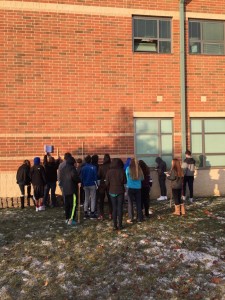My apologies for being out again today, guys. I wish I could be there with you all, but I’m definitely not feeling up to it. I hope you all have a good break!
Integrated science students worked on the Quantitative Force diagrams (NL1 and 2) and the Quantitative Force diagrams 2 (NL1 and 2) for the remainder of class. Students who finished also continued work on the Hover puck and bowling ball lab NL1 2015 . Students will continue learning about forces and motion after break.
Science 8 students worked on their Fossil Lab 2016-17. Any students who finish should read over the Extinction readings. Create 5 review questions for the reading in your notes and answer the following questions (These should not be one-word answers):
1) What do most of the extinction events have in common as their causes?
2) Evaluate the statement: “Mass extinctions are bad.”
3) Scientists think we are at the beginning of a new mass extinction, and humans are the cause. What are some things humans could do to change this, and what are some concerns with the amount of organisms dying off now?
IF students in science 8 finish all this, please play the “Extinction game“.


